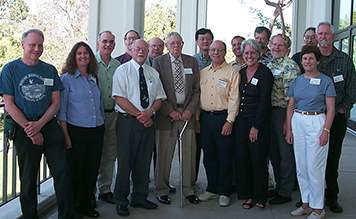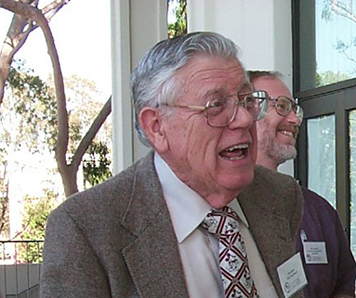Carrying on a Nearly Fifty Year Tradition, Scientists Examine the Intersection of Pollution and Marine Life
Signs of the Times
For starters, vastly more studies are being published on marine pollution and its environmental effects. For this year’s publication, Mearns and his six co-authors, who include Reish and NOAA scientists Nicolle Rutherford and Courtney Arthur, reviewed 341 scientific papers which they pulled from a larger pool of nearly 1,000 studies.
The days of having to physically visit a library each month to read the scientific journals are also over. Instead, Mearns can wait until the end of the year to scour online scientific search engines. Emails replace the handwritten 3x5 index cards. And fortunately, typewriters are no longer involved.
The technology the reviewers are using isn't the only thing to change with the years. In the early days, the major contaminants of concern were heavy metals, such as copper, which were turning up in the bodies of fish and invertebrates. Around the 1970s, the negative effects of the insecticide DDT found national attention, thanks to the efforts of biologist Rachel Carson in her seminal book Silent Spring.
Today, Mearns and Reish see the focus of research shifting to other, often more complicated pollutants, such as nanomaterials, which can be any of a number of materials roughly 100,000 times smaller than the width of a human hair. On one hand, nanotechnology is helping scientists decipher the effects of some pollutants, while, on the other, nanomaterials, such as those found in cosmetics, show potentially serious effects on some marine life including mussels.

Another major trend has been the evolution of the ways scientists evaluate the effects of pollutants on marine life. Researchers in the United States and Western Europe used to study the toxicity of a pollutant by increasing the amount animals are exposed to until half the study animals died.
In the 1990s, researchers began exploring pollutants' finer physiological effects. How does exposure to X pollutant affect, for example, a fish's ability to feed or reproduce?
Nowadays, the focus is even more refined, zeroing in on the molecular scale to discern how pollutants affect an animal's genetic material, its DNA. How does the presence of oil change whether certain genes in a fish's liver are turned on or off? What does that mean for the fish?
A Year of Pollution in Review
With three Office of Response and Restoration scientists working on this effort, it unsurprisingly features a lot on oil spills and marine debris, two areas of our expertise.
Of particular interest to Mearns and Rutherford, as oil spill biologists, are the studies of biodegradation of oil in the ocean, specifically, how microbes break down and eat components of oil, especially the toxic polycyclic aromatic hydrocarbons (PAHs). Scientists are examining collections of genes in such microbes and determining which ones produce enzymes that degrade PAHs.
"That field has really exploded," says Mearns. "It's just amazing what they're finding once they use genomics and other tools to go into [undersea oil spill] plumes and see what these critters are doing and eating."
Marine debris research in 2013 focused on the effects of eating, hitchhiking on, or becoming entangled in debris. Studies examined the resulting impacts on marine life, including sea birds, fish, crabs, turtles, marine mammals, shellfish, and even microbes. The types of debris that came up again and again were abandoned fishing gear and plastic fragments. In addition, quite a bit of research attempted to fill in gaps in understanding of how plastic debris might take up and then leach out potentially dangerous chemicals.
Attitude Adjustment

Perhaps the most significant change over the decades has been a change in attitudes. Reish recalled a presentation he gave at a scientific meeting in 1955. He was discussing his study of how marine worms known as polychaetes changed where they lived based on the effects of pollution in southern California.
Afterward, he sat down next to a professor from another college, whose response to his presentation was, "Don, why don't you go do something important?"
In 2014 attitudes generally skew to the other end of the spectrum when it comes to understanding human impacts on our world and how intertwined these impacts often are with human well-being.
And while there is a lot of bad news about these impacts, Mearns and Reish have seen some bright spots as well. Scientists are starting to observe slow declines in the presence of toxic chemicals, such as DDT from insecticides and PCBs from industrial manufacturing, which last a long time in the environment and build up in the bodies of living things, such as the fish humans like to catch and eat.
The end of the year is approaching and, reliably, Mearns and his colleagues are again preparing to scan hundreds of studies for their annual review of the scientific literature. Reflecting on this effort, Mearns points out another benefit of bringing together such a wide array of research disciplines. It encourages him to cross traditional boundaries of scientific study, enriching his work in the process.
"For me, it inspires out-of-the-box thinking," says Mearns. "I'll be looking at wastewater discharge impacts and I'll spot something that I think is relevant to oil spill studies...We can find out things from these other fields and apply them to our own."
 An official website of the United States government.
An official website of the United States government. 

